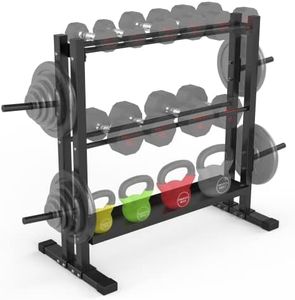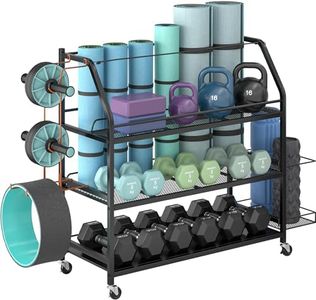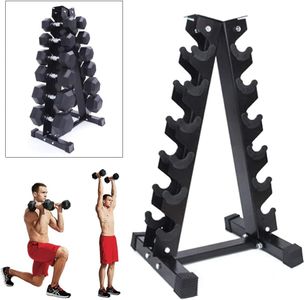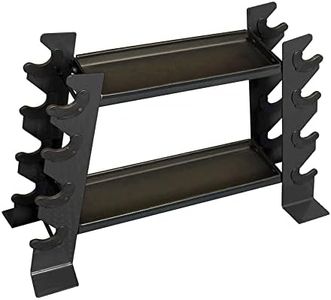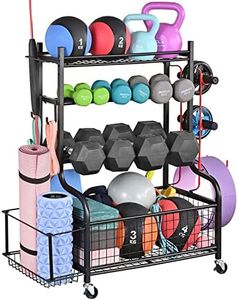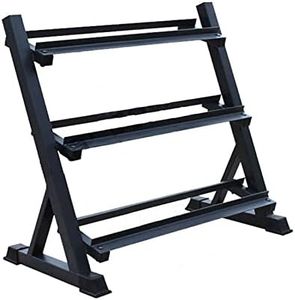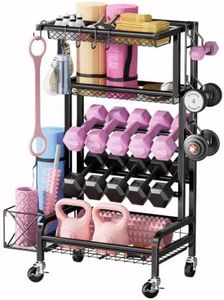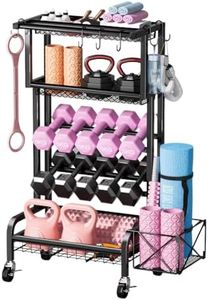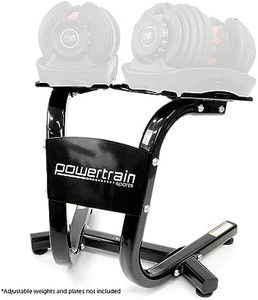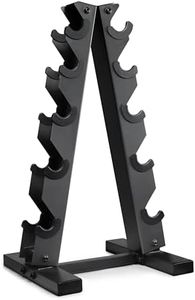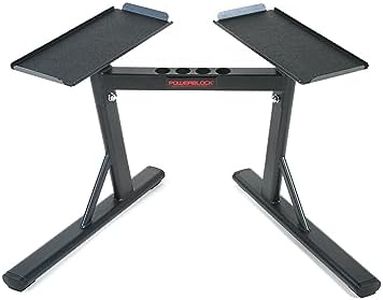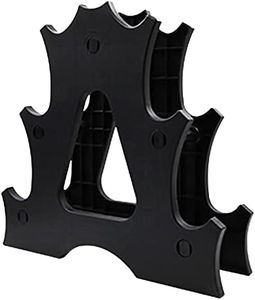We Use CookiesWe use cookies to enhance the security, performance,
functionality and for analytical and promotional activities. By continuing to browse this site you
are agreeing to our privacy policy
10 Best Dumbbell Racks
From leading brands and best sellers available on the web.By clicking on a link to a third party's website, log data is shared with that third party.
Buying Guide for the Best Dumbbell Racks
Choosing the right dumbbell rack is important for organizing your workout space, ensuring safety, and protecting both your equipment and yourself from damage or injury. A good rack will save space, keep things tidy, and make it easy to access the weights you need. To find the best dumbbell rack for your needs, it's helpful to understand a few key features, how they can make a difference, and which to prioritize based on your workout habits and available space.CapacityCapacity refers to how many dumbbells or how much total weight the rack can safely hold. This is important because your rack should accommodate your current collection as well as possible future additions. Racks can be segmented by small (for 3-5 pairs), medium (6-10 pairs), and large (10+ pairs) capacities. Think about how many dumbbells you use regularly and whether you plan to expand your collection over time. Pick a rack that fits your needs now but also offers some room to grow.
Rack TypeRack type describes the rack's shape and general design, which affects space usage and ease of access. There are horizontal racks (like shelves), vertical racks (upright stands), and tiered racks (multiple angled levels). Horizontal and tiered racks offer easy access and stability but take up more floor space, while vertical racks save space but can be less stable or harder to organize. If you have a larger space and multiple dumbbells, a tiered or horizontal rack is ideal; for tighter spaces or fewer dumbbells, a vertical rack works well.
Material and Build QualityThe material and build quality determine the durability, stability, and overall strength of the rack. Most are made from steel, but thickness and finish vary. Well-built racks can support heavier weights and last longer, while cheaper builds might wobble or bend. You can generally find lighter racks for smaller loads and heavier-duty racks for bigger collections. If you have heavier dumbbells or use the rack often, go for a sturdier, higher-quality option.
FootprintFootprint is the amount of floor space the rack takes up. It's important because you want a rack that fits comfortably in your gym area without creating obstacles or looking cluttered. Segment racks by compact/small (minimal impact, suitable for tight spaces), medium (balanced size and capacity), or large (more storage but requires ample space). Measure your available area and consider how the rack's shape will fit before making your choice.
Dumbbell CompatibilityNot all racks fit all types of dumbbells. Some are designed for hex dumbbells, some for round, and others for adjustable sets. The shape and size of your dumbbells will affect how they sit on the rack and how easily you can grab them without pinching fingers or knocking weights around. Check if the rack specifically mentions which dumbbells it fits. Match the rack to your particular dumbbell style for best safety and usability.
Ease of AssemblyEase of assembly refers to how simple and quick it is to set up your rack at home. Some racks come almost fully assembled, while others require considerable effort. If you prefer less hassle or lack tools, look for racks that users rate as easy to assemble. Consider your comfort with basic DIY tasks and whether you’ll need help setting things up before you buy.
